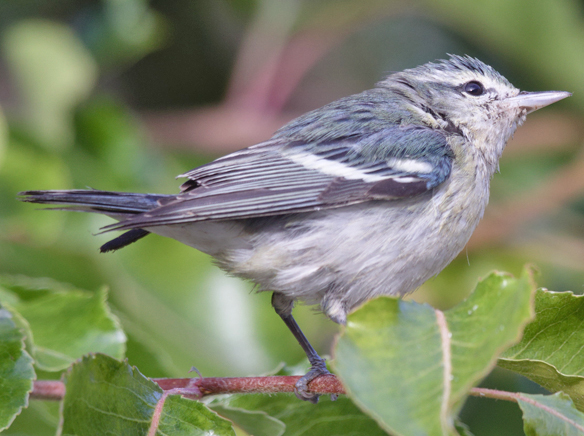For the Islander
Have you noticed the geese that have been in town recently? They were knocked off course by bad weather about a month ago and they found a nice place to rest here on Catalina Island. These vacationing geese been walking around on the golf course, hanging out at Descanso Beach Club and even wading in the bay at Middle Beach. The greater white-fronted geese and cackling geese (look like a small Canada goose) are an example of the more than 28 rare bird species to visit Avalon this Fall.
Every year in the Fall and Spring migrating bird species are expected to stop in, but this year has been exceptional and record-setting. There have been sightings of two species that have never been reported in Los Angeles County: the yellow-bellied flycatcher and the cerulean warbler. Local teacher and avid birder, Laura Vandezande, found the cerulean warbler just 10 feet from her classroom door on October 27. This bird, with a beautiful pale blue-green back and white belly is normally found in the midwest and northeast and migrates to South America for the winter. Excited birders from the mainland flocked to the island as soon as they heard about this wayward visitor. Unfortunately, the bird had places to go and was gone by Saturday morning.
Many people wonder why there are so many unusual birds showing up. There are many factors including localized storms and bad weather (It’s hard to fly through a lightning storm), and larger global concerns such as climate change and its impact on weather patterns including Hurricane Ian which made landfall in Florida on September 28. Birdwatching is an excellent stress reliever and can provide many hours of enjoyment. Worldwide, bird numbers are shrinking due to habitat loss and cat predation. Keep your kitty indoors to help protect wild birds. The next time you see a bird, take a moment to think about its life and what it has been through and where it might be going.
The rare birds sighted so far this fall include: cerulean warbler, yellow-bellied flycatcher, greater white-fronted goose, cackling goose, rose-breasted grosbeak, clay-colored sparrow, white-faced ibis, brown thrasher, magnolia warbler, Tennessee warbler, summer tanager, indigo bunting, red-eyed vireo, Philadelphia vireo, Cassin’s vireo, pacific wren, american redstart, blackburnian warbler, chestnut-sided warbler, yellow-throated warbler, varied thrush, eastern phoebe, tropical kingbird, dickcissel, Townsend’s solitaire, Lucy’s warbler, and Harris’s sparrow.
While birding Laura uses an app called eBird which reports her data to the Cornell Lab of Ornithology. The data is used by scientists to study birds around the world. This data is used by scientists throughout the world to analyze the populations and behaviors of many bird species.
Of course, the Catalina Island Conservancy is also an excellent source for information on birds and animals on the island. If you are interested in birds and community science, join the Catalina Island Conservancy’s Christmas Bird Count December 17 and 18. For more info contact Hillary Holt at hholt@catalinaconservancy.org or 310-510-2595 ext. 422.











